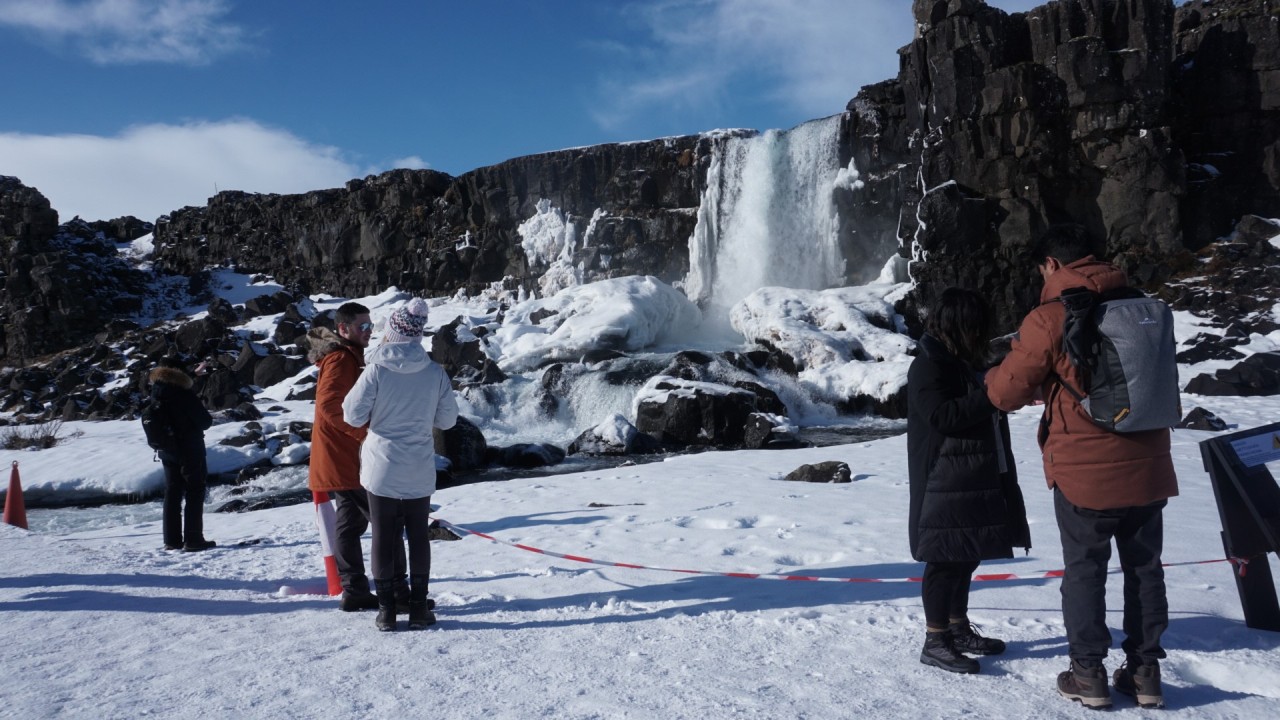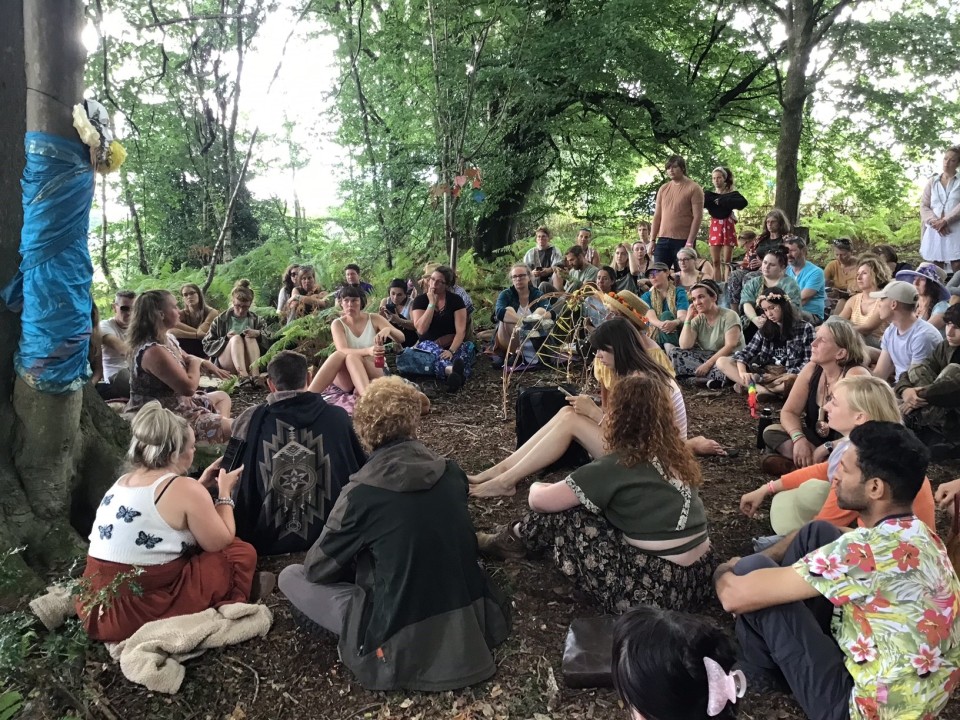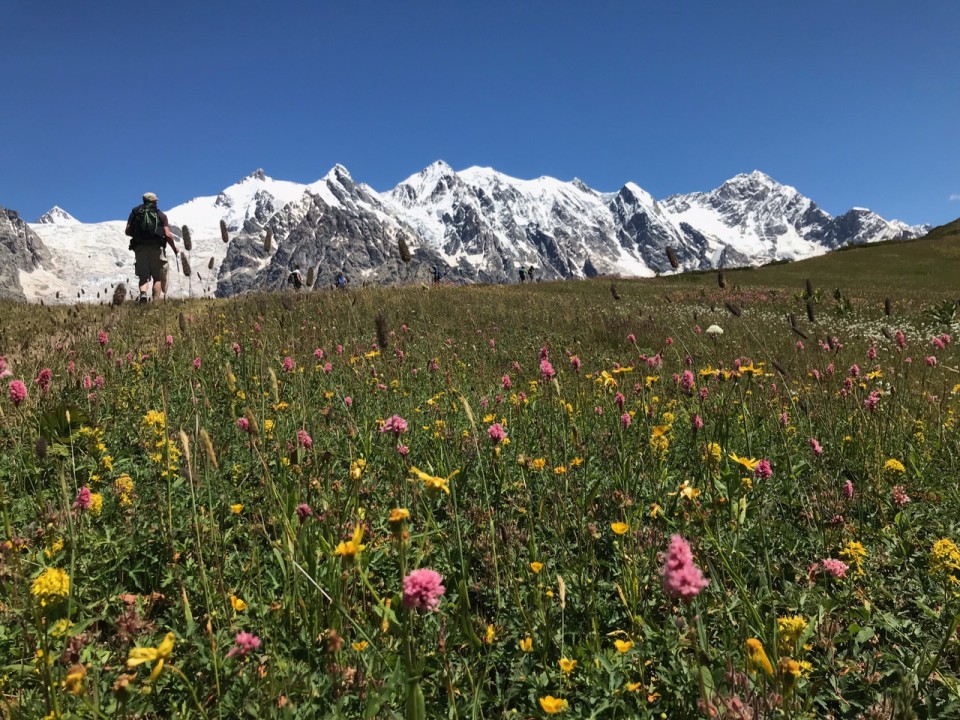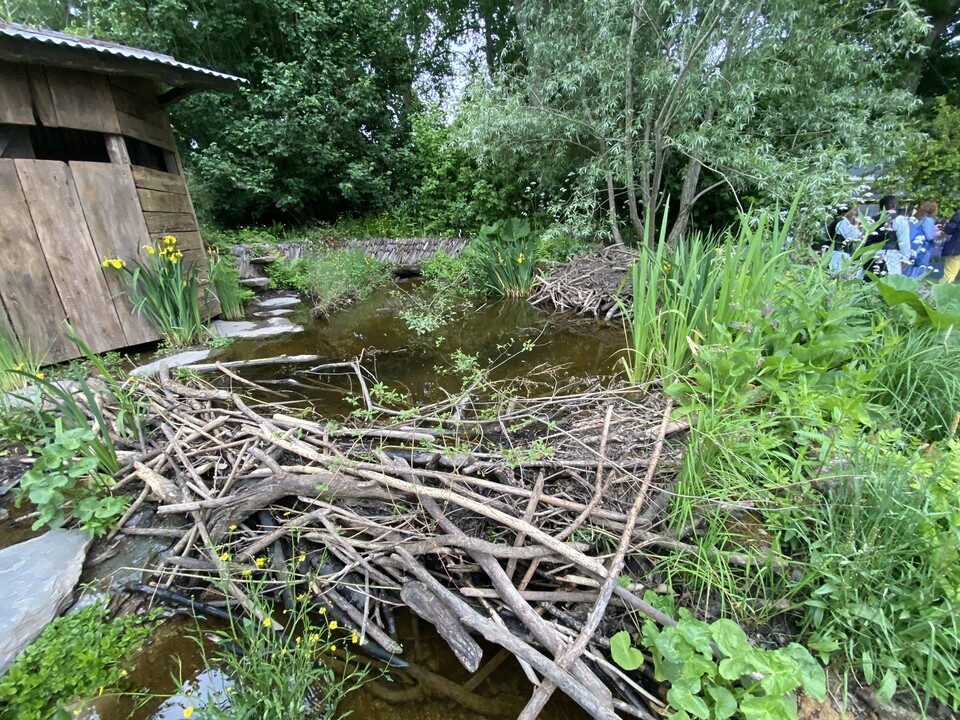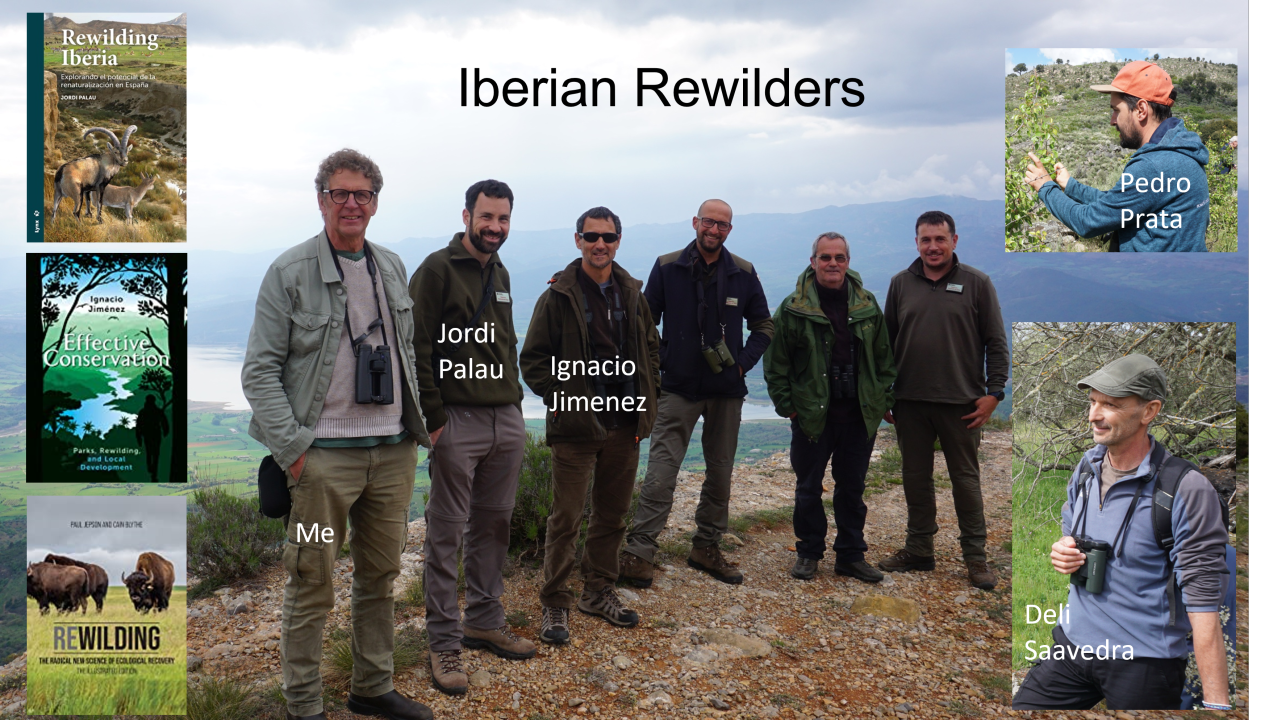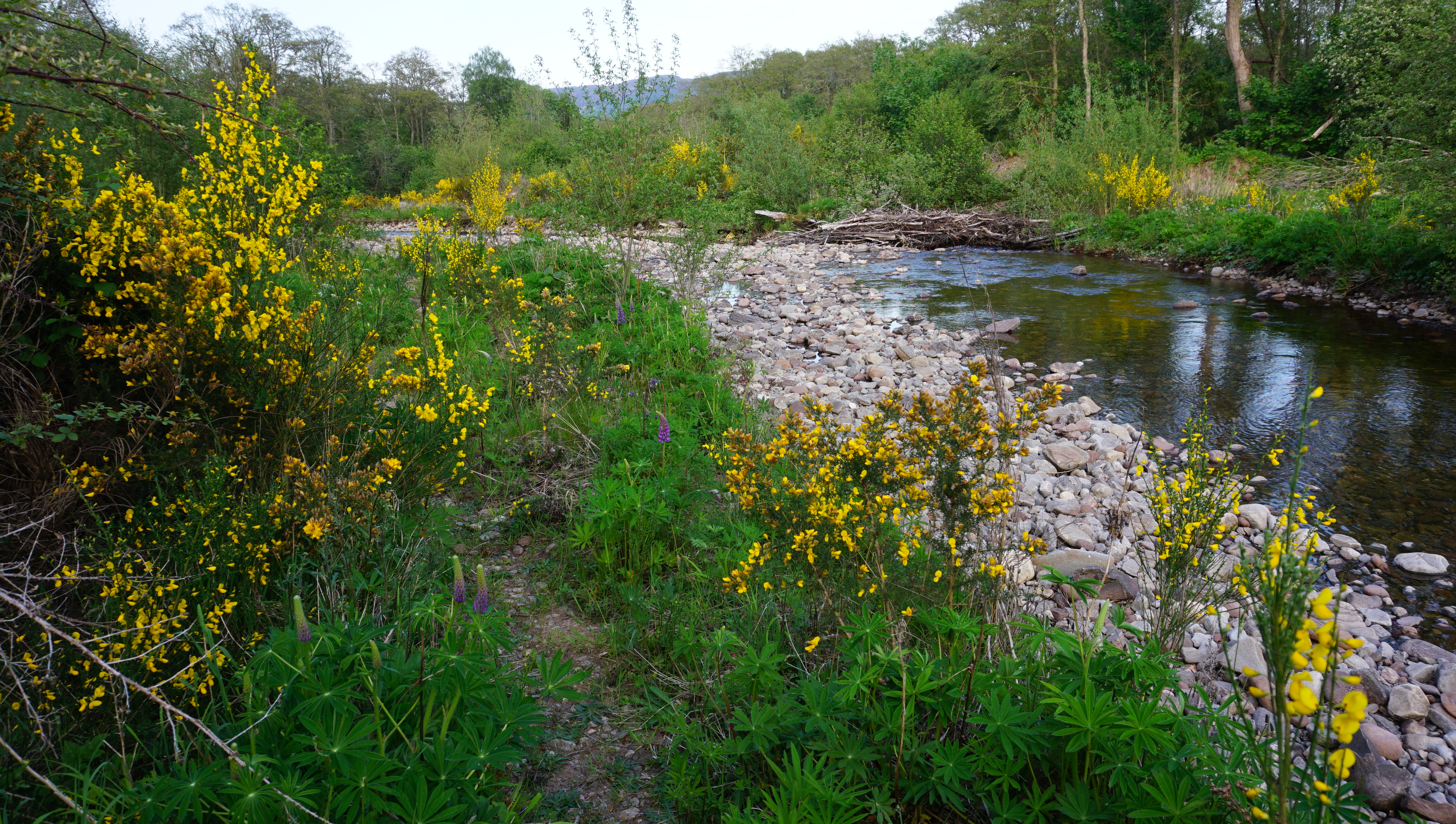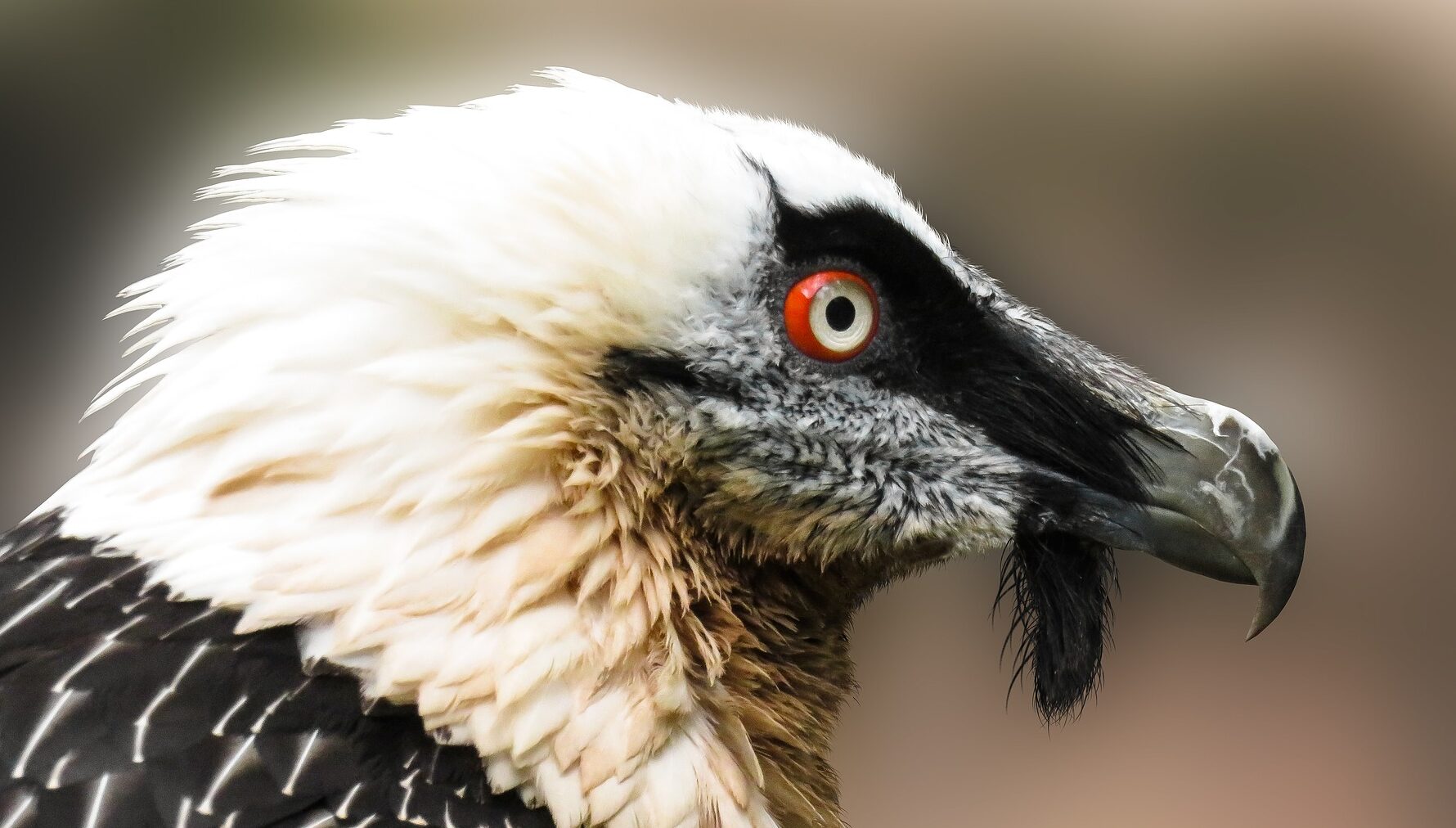Turning off Iceland’s snow-covered route 34 into the packed car park of Thingvellir National Park it was clear we had arrived at a major international tourist destination. Squinting into the sun we followed the stream of tourists past the visitor centre with its cool orthogonal design to a viewpoint with a panoramic view of mountains, the inlets of Lake Thingvallavtn and the spectacular rift of cliffs and fissures caused by continental drifting.

We were part of a classic national park experience with all its uplifting camaraderie. Groups, couples, and families from multiple nations smiling, mingling, taking selfies and looking forward to taking in the sights along a trail system designed for day-tripping. The entry point was down a canyon leading towards a flagpole flying the Icelandic flag. The trail-side interpretive boards told the story of the Althing – Iceland’s first parliament established in 930 at the site of the flagpole and continued until 1800 as a both a legislative assembling and summer fair. The annual Althing attracted tribes from across the island and form to a sense of cultural identify and later nationalism.
Yellowstone (est. 1872) is widely celebrated as the world first national park. Dubbed ‘America’s best idea’, national parks were original founded on the idea that through the enjoyment of spectacular and/or cultural natures in parks a sense of nationhood, cultural identity and citizenship could be forged or reimagined.

Thingvillir embraces and embodies this ideal. It was established in 1930 to protect the historic site of Iceland’s democracy from development. In our 2 hours walk we took in the spectacular Oxararfoss waterfall, discussed the tectonic geology visible in the canyons and fissures, posed for photo next to the pretty church, marvelled at the snowscapes and felt a buzz of excitement when a lone sea eagle flapped by.
Everyone else was pretty much doing the same and I thought about how Thingvillir was actively combining the protection of nature and heritage with active processes of place branding and the production of international culture. It is one of three key attractions on Iceland’s famous Golden Circle route which has helped tourism become the nation’s major foreign exchange earner, employing 30,000 people and supporting a diversity of boutique restaurants and accommodation, which we were also enjoying.
Returning from our walk I took a closer look at the visitor centre and reflected on how national parks can become places where a country can display its proficiency in other areas to visitors: the building was evidence that Iceland has world class architects; the interactive ranger screens and car-parking system that it has companies proficient in cutting-edge visual technologies, and the gift shop demonstrated the presence of thriving and classy craft and fashion sector.
I have long felt a sense of frustration that this hugely valuable place-branding function of National Parks has become lost in international nature policy. Up until the 1980s the United Nations commissioned the IUCN to produce lists of the worlds ‘National Parks and equivalent reserves’. However, as an international technical agency nation building was not IUCNs remit so they started to to produce their own list of protected areas and redefined national parks in conservation science terms as “Large natural or near natural areas set aside to protect large-scale ecological processes, along with the complement of species and ecosystems characteristic of the area, which also provide a foundation for environmentally and culturally compatible spiritual, scientific, educational, recreational and visitor opportunities”.
The majority of the world’s 3,300 national parks have been designated since the signing of the 1992 Rio Convention on Biological diversity and most are biodiversity reserves with little ‘place branding’ and potential. I worry that this has diluted the national park brand and deflected policy attention away from the value of protected special natural asset where people can enjoy nature and heritage together and feel a sense of community and build shared values and pride in the planet we share.
It seems to me that national parks with a place branding purpose are needed more than ever and it would make sense to distinguish national parks designated and managed as cultural assets and national biodiversity reserves designated and managed to conserve ecosystems and natural resources.


